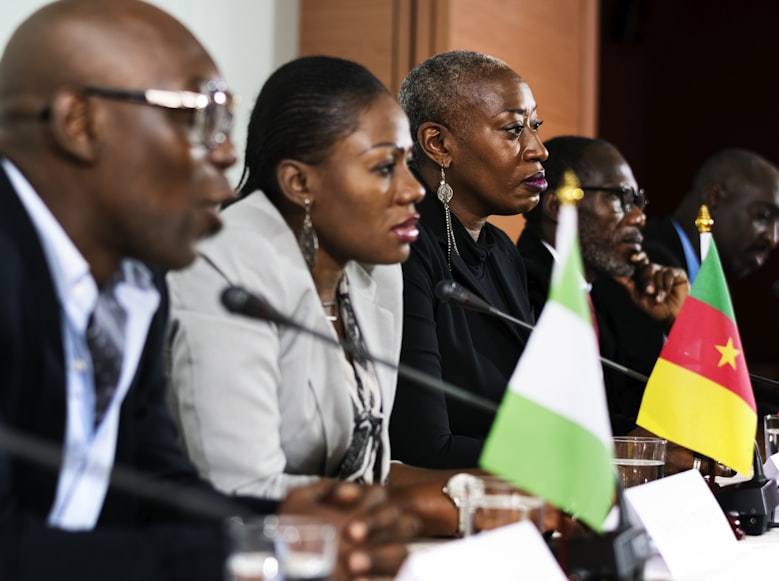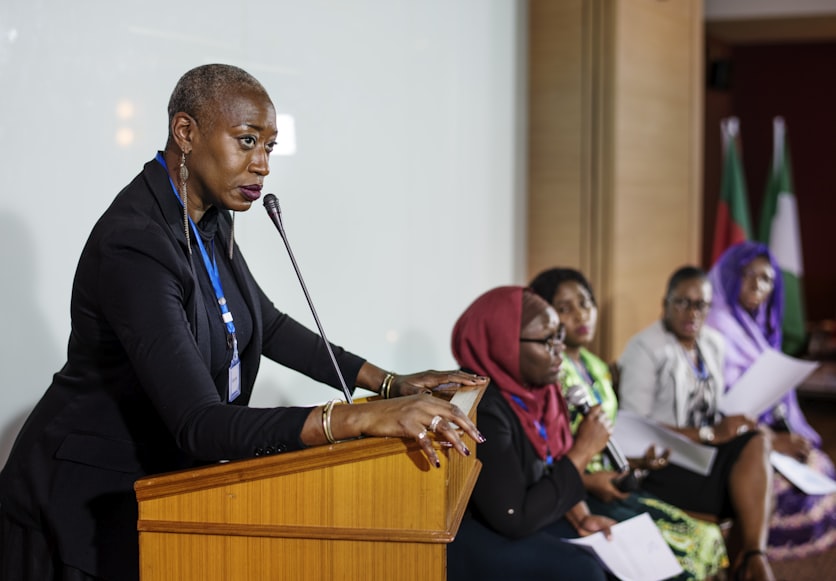YAOUNDÉ, Cameroon — The photographs tell the story before the statistics ever could. In parliament chambers across Central Africa, the empty seats reserved for women outnumber the occupied ones by margins that would be shocking if they weren’t so commonplace.
Yet just under 1,000 kilometers apart, two neighboring countries are quietly rewriting this narrative. Cameroon has steadily climbed to achieve 33.9% women’s representation in its National Assembly, while Chad made headlines in 2024 when 64 women took their seats in parliament for the first time since 2011, translating to 34.04% female representation.
Their success stories offer a fascinating study in contrasts: one country’s methodical progress versus another’s dramatic transformation. Both approaches have delivered results that place them well above the global average of 26.9% as of January 2024, according to the Inter-Parliamentary Union.
The Numbers Behind the Progress
The data reveals two distinct paths to similar destinations. Cameroon’s 33.9% representation as of February 2024, according to UN Women, represents the culmination of more than a decade of steady gains. Chad’s 34.04% calculated from official results showing 64 women elected to a 188-seat parliament emerged from a single transformative election cycle.
To understand why these figures matter, consider the regional context. While comprehensive Central African statistics require verification, individual country data suggests both nations have achieved representation levels that would rank them among Africa’s better performers, alongside established leaders like Rwanda and South Africa.
Cameroon’s Methodical Climb
Patience, it seems, has been Cameroon’s virtue. The country’s breakthrough began with the 2013 elections, when women’s parliamentary representation more than doubled to 31%. UN Women attributed this success to “synergy between actors, adoption of an Electoral Code and involvement of a gender expert” , a carefully orchestrated approach that emphasized institutional preparation over dramatic gestures.
What followed was consolidation rather than regression. Unlike many countries where gains in women’s representation prove temporary, Cameroon maintained and gradually improved its numbers through subsequent electoral cycles, reaching its current 33.9%.
This methodical approach reflects a broader strategy that prioritizes sustainable change over headline-grabbing breakthroughs. Electoral observers note that Cameroon’s progress has been characterized by consistent institutional support and gradual cultural adaptation factors that may explain why its gains have proven durable.
Chad’s Dramatic Transformation
Chad’s story unfolds differently,a tale of dramatic change following prolonged absence. The country went 13 years without parliamentary elections, from 2011 to 2024, due to political instability and transitional governance. When elections finally resumed in December 2024, they produced a parliament with 64 women lawmakers, an increase of 36 women over Chad’s last legislative period, which ended in 2011, according to official results reported by Voice of America.
This transformation didn’t happen by accident. The extended transitional period, while politically challenging, appears to have created space for institutional changes that supported broader political participation. Electoral observers noted efforts during the 2024 process to encourage diverse candidacies, though specific details of these mechanisms require further verification.
The result speaks for itself: Chad jumped from having one of the region’s least representative parliaments to achieving parity with some of Africa’s best performers in a single election cycle.
Different Approaches, Shared Success
The contrast between these neighboring countries illuminates different pathways to political inclusion:
Cameroon’s incremental model demonstrates that steady institutional building can produce lasting change. Each electoral cycle built on previous gains, creating momentum that proved sustainable even as political winds shifted.
Chad’s transformative approach shows how periods of political transition often viewed as destabilizing can create opportunities for dramatic progress when institutional groundwork is laid effectively.
Both strategies required political will, institutional preparation, and favorable timing. But their different paces suggest there’s no single formula for advancing women’s political participation in Central Africa.
The Broader Impact
These achievements extend beyond numbers. Research consistently demonstrates that women legislators prioritize different policy areas than their male counterparts, often focusing more heavily on education, healthcare, and social welfare precisely the areas where Central African countries face their greatest development challenges.
Moreover, both countries’ success challenges assumptions about African political culture. Critics often argue that traditional societies inherently resist women’s political leadership, but Cameroon and Chad’s experiences suggest that well-designed institutional changes can overcome cultural barriers more effectively than many assume.
Challenges That Remain
Success stories shouldn’t obscure ongoing obstacles. Both countries still face structural barriers that limit women’s full political participation:
Financial constraints continue to limit women’s ability to mount competitive campaigns. Political campaigns require significant resources for travel, advertising, and staff that many women candidates struggle to access.
Cultural expectations about women’s roles, while changing, haven’t disappeared overnight. Both countries report that women politicians face different public scrutiny than their male counterparts, often having their family lives and personal choices subjected to criticism that men rarely experience.
Regional variations within both countries mean that national averages can mask significant disparities between urban and rural areas, or between different ethnic or linguistic communities.
Lessons for the Region

The Cameroon-Chad comparison offers several insights for other Central African countries seeking to improve women’s political representation:
Institutional preparation matters more than speed. Chad’s success during its transitional period suggests that political upheaval can create opportunities for change but only when accompanied by careful preparation.
Consistency yields compound returns. Cameroon’s steady progress demonstrates that incremental gains can accumulate into significant change when sustained over multiple electoral cycles.
Regional leadership is possible. Both countries prove that Central African nations needn’t wait for global trends or external pressure to advance women’s political participation. Local solutions can produce world-class results.
Timing creates opportunities. Both countries benefited from favorable political moments Chad’s post-transition elections and Cameroon’s 2013 institutional reforms—that created space for change.
Looking Forward
As both countries prepare for future electoral cycles, their experiences offer hope for sustained progress. Cameroon’s challenge will be maintaining momentum while addressing remaining barriers to full gender parity. Chad’s test will be building on its dramatic gains while ensuring that institutional changes prove durable beyond the immediate post-transition period.
For the broader Central African region, these neighboring countries have demonstrated that empty seats needn’t remain empty. The question now isn’t whether women can achieve political parity in Central Africa, it’s how quickly other countries will follow their lead.
The empty seats that once symbolized women’s exclusion from political power are slowly being filled, one election at a time. In parliament chambers from Yaoundé to N’Djamena, the silence is breaking.
Author’s Note
This WanaData story was supported by Code for Africa and the Digital Democracy Initiative as part of the Digitalise Youth Project, funded by the European Partnership for Democracy (EPD).

